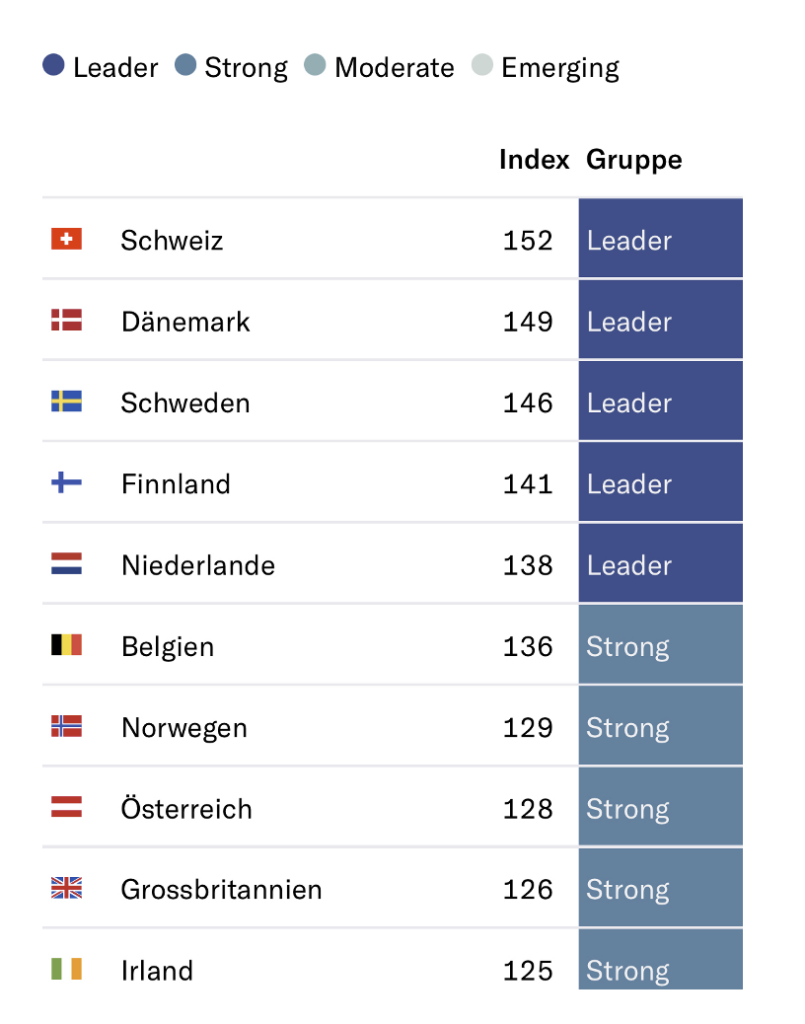Since the beginning of industrialization, Europe has been the engine of innovation in the global economy.
This hegemonic position has since been lost to Silicon Valley in the USA or the megacities in Asia.
However, there are some European countries that are recognized worldwide as drivers of innovation.
What do they do better and in what form?
Corporate culture as a driver of success:
Focus on Scandinavian approaches

In order to understand these industry-independent successes, this article will deliberately ignore important economic conditions such as government spending, the degree of digitalization, school education as measured by the PISA index and the immigration rate and focus on the corporate culture practiced in the “leader” counties, taking a psychological and sociological approach that is very common in the Scandinavian countries. These approaches are based on the models of Robert Sternberg and Raymond Cattell.
Intelligence and organization: How Cattell and Sternberg explain the success of teams
Raymond Catell was a British-American personality psychologist and Robert Sternberg expanded the intelligence approach to include external influencing factors and reflected it on a sociological level.
When organizations start the creativity process through joint working groups, these ideas or approaches encounter forces of inertia.
“The essence of intelligence is not knowledge but rather the ability to apply knowledge in practice.”
– Robert Sternberg
In order to understand how successful organizations act as a group of individuals, it is first necessary to understand the people involved.
Catell divides psychological intelligence into two areas – fluid intelligence on the one hand and crystalline intelligence on the other.
In simple terms, fluid intelligence refers to the ability to think logically and solve problems.
Fluid intelligence makes it possible to recognize patterns, adapt quickly to new situations and find abstract solutions.
Crystalline intelligence, on the other hand, refers to the knowledge and skills that are based on one’s own experiences, acquired knowledge and past experiences.
Interestingly, a person never develops both abilities equally in their lifetime.
Fluid intelligence reaches its peak in young adulthood, while crystalline intelligence gradually increases until the age of 70 and then begins to decline.
Success factors in Scandinavian organizations
The Scandinavian corporate culture is based on a cross-generational, discussion-based approach in which the different states of intelligence are accepted and taken into account for the benefit of the organization.
Organizations have to adapt very quickly to external pressure to change.
This flexibility of organizations is called adaptive intelligence.
Under such conditions, those organizations that are best able to adapt to uncertainty are the ones that succeed.
Organizations must develop a situational intuition and constantly question the path they have taken.
This adaptability is only guaranteed when individuals come together who complement each other with their fluid and crystalline intelligence.
A high IQ of an individual is not enough to be strategically successful in today’s volatile environment.
Situational intuition is one factor, and the necessary creativity is another success factor.
Normally, creativity thrives in a safe, calm environment.
However, in a dynamically changing and increasingly complex environment, organizations need to be creative during their transformation process.
When organizations start the creativity process through joint working groups, these creative ideas/approaches encounter forces of inertia.
These forces of inertia are based on negative prior knowledge, which can block creativity.
However, it is precisely these negative experiences that must be used today as a basis for further development without sanctions for the people involved (fail-forward approach).
These experiences are the basis for the third pillar of adaptive intelligence – active learning.
This involves using knowledge from the past in a positive way and combining it with additional information to create something new.
The key to successful adaptability
of organizations
Organizations can only achieve this adaptive intelligence if they combine artificial intelligence with the fluid and crystalline intelligence of youth and age in a meaningful way and adapt the organizations to the constantly changing framework conditions by learning.
Successful management is characterized by combining employees at all levels in such a way that fluid and crystalline intelligence complement each other to create something new and errors are encouraged as part of organizational development!
Supplementary information:
Raymond Catell was a British-American personality psychologist and Robert Sternberg expanded the intelligence approach to include external influencing factors and reflected it on a sociological level.





